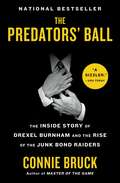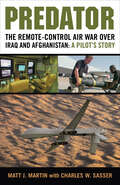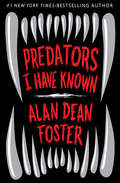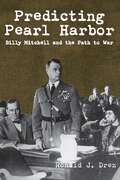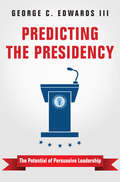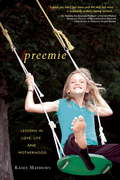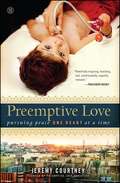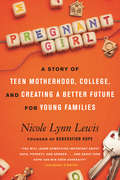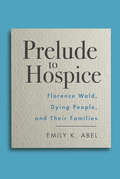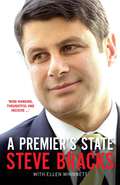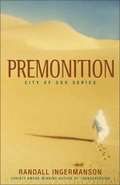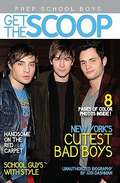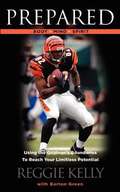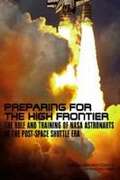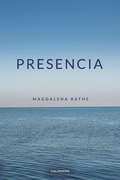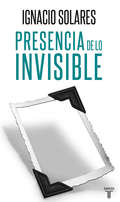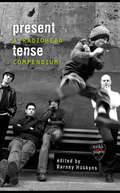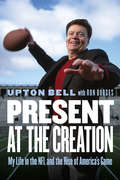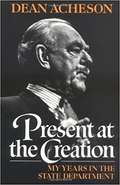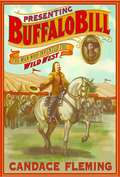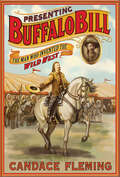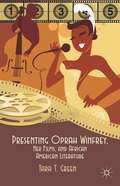- Table View
- List View
Predator's Ball: The Inside Story of Drexel Burnham and the Rise of the Junk Bond Raiders
by Connie BruckDuring the '80s, Michael Milken at Drexel Burnham created the corporate raiders. He was the billionaire Junk Bond King. But, in the corner stood the U.S. District Attorney waiting to file criminal and racketeering charges.
Predator: A Memoir, a Movie, an Obsession
by Ander MonsonA searching memoir of a life lived in the flicker of an action film, by the author of I Will Take the Answer In his first memoir, Ander Monson guides readers through a scene-by-scene exploration of the 1987 film Predator, which he has watched 146 times. Some fighters might not have time to bleed, but Monson has the patience to consider their adventure, one frame at a time. He turns his obsession into a lens through which he poignantly examines his own life, formed by mainstream, white, male American culture. Between scenes, Monson delves deeply into his adolescence in Michigan’s Upper Peninsula and Riyadh, his role as a father and the loss of his own mother, and his friendships with men bound by the troubled camaraderie depicted in action and sci-fi blockbusters. Along with excursions into the conflicted pleasures of cosplay and first-person shooters, he imagines himself beside the poet and memoirist Paul Monette, who wrote the novelization of the movie while his partner was dying of AIDS.A sincere and playful book that lovingly dissects the film, Predator also offers questions and critiques of masculinity, fandom, and their interrelation with acts of mass violence. In a stirring reversal, one chapter exposes Monson through the Predator’s heat-seeking vision, asking him, “What do you know about the workings of the hidden world?” As Monson brings us into the brilliant depths of the film and its universe, the hunt begins.
Predator: Rape, Madness and Injustice in Seattle
by Jack OlsenJack Olsen, "the master of the true crime book," now gives us an incisive, probing look into the creation and development of the criminal mind, as well as a shocking case of justice gone awry. From childhood, McDonald Smith took to heart the lessons drummed into him by antisocial relatives and peers. As a teenager, unburdened by conscience or pity, he experimented with child abuse and bestiality, then moved on to larceny, stickups, incest, and, finally, rape. Warned by a "witch" that he was about to be arrested, he fled Los Angeles for Seattle and the Northwest--already the breeding ground of predatory monsters like Ted Bundy, Kenneth Bianchi, and the Green River Killer. There, for years, he stalked the women of Seattle, seeking his prey on the dark streets and in the quiet homes, then returning to his wife and family: too careful--and too clever--to be caught. By fall 1980, Mac Smith's luck still held. A respectable young businessman named Steve Titus found himself charged with one of Smith's most sadistic rapes in a nightmarish case of mistaken identity and injustice. The idealistic Titus was certain that the American system of justice would clear him--right up to the day that a jury of his peers returned a verdict of guilty as charged. While Mac Smith continued to terrorize the women of Seattle, Titus lost everything: his reputation, his job, his loved ones, his freedom. It was only when a Pulitzer prizewinning reporter answered Titus's pleas for justice that the terrible truth emerged: a truth that was darker than anyone imagined. Predator is a gripping work of true crime reporting: Jack Olsen doing what he does best. It is a searing study of violations: of women, of justice, of power, and of the human spirit.
Predator: The Remote-Control Air War Over Iraq and Afghanistan: A Pilot's Story
by Charles W. Sasser Matt J. MartinThe Nintendo generation has taken to the battlefields of Iraq and Afghanistan where remotely controlled aircraft are killing America¹s enemies and saving American lives.Matt J. Martin is considered a "top gun" in the world of unmanned aerial vehicles (UAVs). For nearly four years, he has flown hundreds of missions on two warfronts in a new kind of combat that, until recently, was largely classified Top Secret. He and his fellow Predator pilots have been actively involved in virtually every facet of the War on Terror in Iraq and Afghanistan: tracking Osama bin Laden; capturing top al-Qaeda leader al-Zarqawi; fighting with the U.S. Marines in Fallujah; and rescuing aid workers kidnapped in Afghanistan by the Taliban.This is Matt J. Martin's story and that of his aircraft, the 27-foot long Predator.
Predators I Have Known
by Alan Dean FosterAn adrenaline-fueled travel memoir of life in the wild among the planet&’s most ferocious and fascinating predators.Over the last forty years, New York Times–bestselling author Alan Dean Foster has journeyed around the globe to encounter nature&’s most fearsome creatures. His travels have taken him into the heart of the Amazon rain forest on the trail of deadly tangarana ants, on an elephant ride across the sweeping green plains of central India in search of the elusive Bengal tiger, and into the waters of the Australian coast to come face-to-face with great white sharks. Packed with pulse-pounding adventure and spiked with rapier wit, Predators I Have Known is a thrilling look at life and death in the wild.
Predicting Pearl Harbor: Billy Mitchell and the Path to War
by Ronald DrezThe story of &“a military aviation pioneer and patriot who tried—and failed—to warn [about] an attack on Pearl Harbor almost two decades before it occurred&” (San Antonio Express-News). Ever since Commodore Matthew Perry&’s 1853 voyage into Japanese waters, the United States and Japan had been on a collision course. Gen. Billy Mitchell recognized the signs and foresaw the eventual showdown between the two nations—eighteen years before the tragedy of Pearl Harbor. When he traveled to Japan disguised as a tourist in 1924, what he found was a nation that had embraced a philosophy of isolationism. Japan had defeated China and Russia on the battlefield decades before, due in part to a veil of secrecy. China and Russia were nearly unable to carry out espionage missions against their enemy. Yet Mitchell&’s predictions were dismissed out of hand, and his attempts to have his theories taken seriously led to scorn and a subsequent court martialing. In this book, primary-source documents, memoirs, and firsthand testimonies deliver an exhaustive background to Mitchell&’s prescient reports. Historian Ronald J. Drez presents an engaging account of the life and career of the man who not only foresaw the event that brought the United States into the Second World War, but also shaped the future of military air power—finally giving credence to the man called the &“Cassandra General.&”
Predicting the Presidency: The Potential of Persuasive Leadership
by George C. Edwards IIIMillions of Americans—including many experienced politicians—viewed Barack Obama through a prism of high expectations, based on a belief in the power of presidential persuasion. Yet many who were inspired by candidate Obama were disappointed in what he was able to accomplish once in the White House. They could not understand why he often was unable to leverage his position and political skills to move the public and Congress to support his initiatives. Predicting the Presidency explains why Obama had such difficulty bringing about the change he promised, and challenges the conventional wisdom about presidential leadership. In this incisive book, George Edwards shows how we can ask a few fundamental questions about the context of a presidency—the president's strategic position or opportunity structure—and use the answers to predict a president's success in winning support for his initiatives. If presidential success is largely determined by a president's strategic position, what role does persuasion play? Almost every president finds that a significant segment of the public and his fellow partisans in Congress are predisposed to follow his lead. Others may support the White House out of self-interest. Edwards explores the possibilities of the president exploiting such support, providing a more realistic view of the potential of presidential persuasion. Written by a leading presidential scholar, Predicting the Presidency sheds new light on the limitations and opportunities of presidential leadership.
Preemie
by Kasey MathewsIn her early thirties, Kasey Mathews had it all: a loving husband, a beautiful two-year-old son, and a second baby on the way. But what seemed a perfect life was shattered when she went into labor four months early, delivering her one-pound, eleven-ounce daughter, Andie.The first time Kasey was wheeled into the Neonatal Intensive Care Unit (NICU), nothing prepared her for what she saw: a tiny, fragile baby in a tangle of tubes and wires. All at once, Kasey was confronted with a new and terrifying reality that would test the limits of love, family, and motherhood.In this riveting, honest, and often humorous memoir, Preemie chronicles the journey of one tiny baby's tenacious struggle to hold on to life and the mother who ultimately grew with her. From hospital waiting rooms to the offices of alternative practitioners, from ski slopes to Symphony Hall, Kasey tries to make meaning of her daughter's birth and eventually comes to learn that gifts come in all sizes and all forms, and sometimes... right on time.
Preemptive Love
by Jeremy CourtneyViolence unmakes the world. Preemptive love unmakes violence. Follow the impassioned efforts of the Courtney family, their team, and the Preemptive Love Coalition as they help the tens of thousands of Iraqi children waiting for life-saving heart surgery.In the summer of 2007, Jeremy and Jessica Courtney found themselves with their two children in the middle of Iraq, haunted by their encounter with a little girl dying of a heart defect. The Courtneys soon learned that her condition wasn't unique; more than 30,000 children across Iraq are in desperate need of heart surgery--in a country with no pediatric heart surgeons. Faced with this staggering statistic, Jeremy, Jessica, and a team of friends decided they had to find a way to help these children. But their mission proved to be more challenging than expected. Sending children abroad for surgery is expensive, cumbersome, and fails to address the systemic needs of local hospitals--the place where these children really should be saved. Through deaths, bombings, imprisonments, and intense living conditions in Iraq, Jeremy writes a firsthand account of his team's lifesaving and peacemaking efforts in the world's most notorious war-torn country. Preemptive Love needs no exaggeration to make its point: In the heart of conflict, there is only one rule big enough to change a nation--love first, ask questions later.
Pregnant Girl: A Story of Teen Motherhood, College, and Creating a Better Future for Young Families
by Nicole Lynn LewisAn activist calls for better support of young families so they can thrive and reflects on her experiences as a Black mother and college student fighting for opportunities for herself and her child.Pregnant Girl presents the possibility of a different future for young mothers--one of success and stability--in the midst of the dismal statistics that dominate the national conversation. Along with her own story as a young Black mother, Nicole Lynn Lewis weaves in those of the men and women she's worked with to share a new perspective on how poverty, classism, and systemic racism impact teen pregnancy and on how effective programs and equitable policies can help teen parents earn college degrees, have increased opportunity, and create a legacy of educational and career achievements in their families. After Nicole became pregnant during her senior year in high school, she was told that college was no longer a reality--a negative outlook often unfairly presented to teen mothers. Nicole left home and experienced periods of homelessness, hunger, and poverty. Despite these obstacles, she enrolled at the College of William & Mary and brought her three-month-old daughter along. Through her experiences fighting for resources to put herself through college, she discovered her true calling and founded her organization, Generation Hope, to provide support for teen parents and their children so they can thrive in college and kindergarten--driving a two-generation solution to poverty.Pregnant Girl will inspire young parents faced with similar choices and obstacles that they too can pursue their goals with the right support.
Prelude to Hospice: Florence Wald, Dying People, and their Families (Critical Issues in Health and Medicine)
by Emily K. AbelHospices have played a critical role in transforming ideas about death and dying. Viewing death as a natural event, hospices seek to enable people approaching mortality to live as fully and painlessly as possible. Award-winning medical historian Emily K. Abel provides insight into several important issues surrounding the growth of hospice care. Using a unique set of records, Prelude to Hospice expands our understanding of the history of U.S. hospices. Compiled largely by Florence Wald, the founder of the first U.S. hospice, the records provide a detailed account of her experiences studying and caring for dying people and their families in the late 1960s and early 1970s. Although Wald never published a report of her findings, she often presented her material informally. Like many others seeking to found new institutions, she believed she could garner support only by demonstrating that her facility would be superior in every respect to what currently existed. As a result, she generated inflated expectations about what a hospice could accomplish. Wald’s records enable us to glimpse the complexities of the work of tending to dying people.
Premier's State
by Ellen Whinnett Steve Bracks'In May 1994, while I was going through pre-selection for the seat of Williamstown, I sat down at my desk at home and I wrote a note. I was thirty-nine years old and in that note I mapped out what I hoped would happen in my life.'By the time he was forty-eight, Steve Bracks had achieved the goal he'd set himself nine years earlier. He was premier of Victoria. In A Premier's State he reflects on his ambition to make a difference, and how he reached his goal. He talks about his early childhood growing up in a conservative but impassioned family that supported the Democratic Labor Party, and about his gradual evolution from left-wing university radical to pragmatic centre-left premier. He reveals for the first time the background to his decision to take the party's leadership from his friend John Brumby in 1999—then to hand it back to John in 2007 when he sensationally resigned from office. He gives insights into how to run a successful government and how to manage the factions, and talks about everything from the impact of public life on his family, to forming minority government with independents.
Premonition (City of God #2)
by Randall IngermansonIn A.D. 66, Jerusalem cowers as imperial Rome prepares for war---but one woman already knows the outcome. Time travelers from the far future, Rivka and her husband, Ari, are caught in the violence. Rivka knows that before Jerusalem is destroyed, a prophet will warn the church. Is she the one?
Prep School Boys
by Josi DashmanChace Crawford, Ed Westwick, and Penn Badgley are best known for their roles on the CW's hit series Gossip Girl, but they've also made names for themselves by starring in major Hollywood films and posing on the covers of popular magazines like Rolling Stone. We've got all the most gossip-worthy information on these three boys, from their early years to their career-changing roles as Upper East Side prep boys, complete with eight pages of color photos!
Prepared: Using the Gridiron's Boundaries to Reach Your Limitless Potential
by Reggie Kelly Barton GreenReggie Kelly of the Cincinnati Bengals tells how our measure of success, both on the field and in our daily life, is defined by what we are willing and able to do, despite our surroundings. From the first backyard Training Camp--the Garden of Eden--to the grassy scrimmage line of an NFL faceoff, Reggie explores the timeless lessons that shape the three ever-developing parts of mankind: the Body, Mind and Spirit. As Reggie notes, "Be it the gates of Heaven or the goalposts of the Super Bowl, we are not worthy, nor ready to stand before either until we are first ... prepared. "
Preparing for the High Frontier
by Committee on Human Spaceflight Crew OperationsAs the National Aeronautics and Space Administration (NASA) retires the Space Shuttle and shifts involvement in International Space Station (ISS) operations, changes in the role and requirements of NASA's Astronaut Corps will take place. At the request of NASA, the National Research Council (NRC) addressed three main questions about these changes: what should be the role and size of Johnson Space Center's (JSC) Flight Crew Operations Directorate (FCOD); what will be the requirements of astronaut training facilities; and is the Astronaut Corps' fleet of training aircraft a cost-effective means of preparing astronauts for NASA's spaceflight program? This report presents an assessment of several issues driven by these questions. This report does not address explicitly the future of human spaceflight.
Presencia
by Magdalena RatheEncuentro con una enseñanza espiritual que cambió su vida. Un viaje desde el mundo de la decepción -después de la pérdida de un embarazo- hacia la reconexión consigo misma y con la vida. En esta memoria, la autora narra su encuentro con una enseñanza que transforma su sistema de creencias y la guía en su proceso de reconciliación interna. Nociones sobre el contenido de ese camino espiritual se mezclan con imágenes de la infancia de la autora en Jujuy (Argentina), de su conexión instantánea con el mar en la República Dominicana, de su retorno emocional a la Argentina después de quince años de ausencia y de sus viajes en busca del conocimiento por otros países.
Presencia de lo invisible
by Ignacio SolaresA través de dieciséis ensayos, Ignacio Solares revela capítulos desconocidos de la vida de grandes personajes de la historia. De Ignacio Solares, ganador del Premio Fernando Benítez. ¿Fue la Revolución Mexicana resultado de las lecturas espíritas de Madero? ¿Víctor Hugo tuvo conversaciones con el "otro" mundo? ¿Cuál fue la verdadera razón del ateísmo de Sartre? Presencia de lo invisible, en dieciséis ensayos, desvela episodios -muchos de ellos desconocidos- de las vidas de grandes personalidades. El giro hacia el ocultismo que dio el racionalismo irredento de Freud al final de su vida; las levitaciones de Santa Teresa, tan relacionadas con su enfermedad histérica; la creencia de Jung en los fenómenos paranormales; la hipocondría de Camus relacionada con su literatura; la relación del psicoanálisis y la religión; las dudas de Graham Greene, más que su fe misma, son algunos de los temas que el lector encontrará en este libro. Lo que ha dicho la crítica: "Ignacio Solares rescata en este ameno libro algunos de los casos más notables. A los 16 capítulos, que tienen títulos como Freud y la parasicología, Madero y los escritos espiritistas que desataron un revolución y Violencia y/o civilización, escritos con elegancia y precisión sólo les falta una cosa: más capítulos con más casos interesantes, pues el libro nos deja deseando mucho más". -Manuel Lino, El Economista.
Present Tense: A Radiohead Compendium
by Barney Hoskyns'Present Tense is an anthology to savour . . . giving you as sharp a portrait of this unknowable band as you could hope for . . . Radiohead fans will love it' Classic RockA Rock's Backpages anthology of Radiohead, the most radical and fascinating rock band in modern music history, edited and introduced by Barney Hoskyns.For over 25 years, Radiohead have been the most radical and fascinating rock band in the world. Fearless in their desire to change and shape-shift, the Oxfordshire quintet has - through the nine studio albums from 1993's Pablo Honey to 2016's A Moon-Shaped Pool - consistently stretched the boundaries of what 'rock' means and does. Anchored in Thom Yorke's soaring voice and elliptical lyrics, and in the compositional genius of guitarist/keyboardist Jonny Greenwood, Radiohead continue to astonish as they approach their fourth decade.Present Tense collects the best writing on this most literate of pop groups, from the earliest local reports about On A Friday - Radiohead's first moniker - through the inspired commentary of Mark Greif and Simon Reynolds to the trenchant profiles of Will Self, John Harris and others. It's an anthology that goes a long way towards explaining what Rock's Backpages editor Barney Hoskyns describes as the band's 'seriousness, emotional grandeur and willingness to stare humanity's dystopian hi-tech future in the face'.
Present at the Creation: My Life in the NFL and the Rise of America's Game
by Upton Bell Ron BorgesTo understand how the NFL became the sports phenomenon it is today, you can study its history or you can live its history as an active participant. Upton Bell grew up at the knee of the NFL’s first great commissioner, his father, the legendary Bert Bell, who not only saved the game from financial ruin after World War II but was one of its greatest innovators. Coining the phrase “On any given Sunday,” Bert invented the pro football draft and proposed sudden death rules.Present at the Creation details Bell’s firsthand experiences, which started as he watched his father draw up the league schedule each year at the kitchen table using dominoes. There he learned the importance of parity, which is a hallmark of the league’s success, and also how to create it. Over the past fifty-three years, Bell has been an owner, a general manager, a personnel executive, a scouting director for two Super Bowl teams, a television commentator and analyst, and a talk-radio host. He has seen the NFL from the inside and has experienced many of the most important moments in NFL history. Bell was player personnel director for the Baltimore Colts when the team played in three championship games and appeared in two Super Bowls (1968 and 1970). At thirty-three, he became the youngest general manager in NFL history when he joined the Patriots in that role in 1971. He left the NFL in 1974 to compete against it, joining the upstart World Football League as owner of the Charlotte Hornets, which lasted just two years. In 1976 Bell began his forty‑year career as a radio and TV talk-show host, yet he remains a football guy who was in the middle of the game’s most significant moments and knows that half the story has never been told, until now.Watch a book trailer.
Present at the Creation: My Years in the State Department
by Dean AchesonIn these memoirs by the former Secretary of State, Dean Acheson sees himself as having been "present at the creation" of the American century. Acheson's policies were praised by many and damned by others, including Joseph McCarthy.<P><P> Pulitzer Prize Winner
Presenting Buffalo Bill: The Man Who Invented The Wild West
by Candace FlemingEveryone knows the name Buffalo Bill, but few these days know what he did or, in some cases, didn't do. Was he a Pony Express rider? Did he serve Custer at the Battle of Little Big Horn? Did he scalp countless Native Americans, or did he defend their rights?<P><P> This, the first significant biography of Buffalo Bill Cody for younger readers in many years, explains it all. Presenting Buffalo Bill makes the great showman come alive for new generations. Extensive back matter, bibliography, and source notes complete the package.
Presenting Buffalo Bill: The Man Who Invented the Wild West
by Candace FlemingEveryone knows the name Buffalo Bill, but few these days know what he did or, in some cases, didn't do. Was he a Pony Express rider? Did he serve Custer at the Battle of Little Big Horn? Did he scalp countless Native Americans, or did he defend their rights?This, the first significant biography of Buffalo Bill Cody for younger readers in many years, explains it all. With copious archival illustrations and a handsome design, Presenting Buffalo Bill makes the great showman come alive for new generations. Extensive back matter, bibliography, and source notes complete the package. This title has Common Core connections.
Presenting Oprah Winfrey, Her Films, and African American Literature
by Tara T. GreenOprah Winfrey has long promoted black issues by being involved as a producer or actor in the adaptation of works by African American writers for film. This volume evaluates Winfrey's involvement in the visual interpretation of African American literary texts using film, music, black masculinity, black feminist, and cultural theory.
